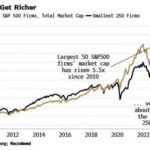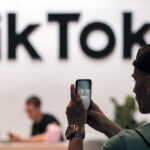
Prices are up nearly 19% across the board since President Joe Biden entered office, meaning households are suffering sticker shock even if the inflation rate has moderated in recent months.
Inflation, as tracked by the consumer price index, rose to 3.5% for the year ending in March, the Bureau of Labor Statistics reported Wednesday. Overall, the index is up 18.9% since January of 2021.
Over the past three years, inflation has torn through the economy, peaking at a 9% annual rate in June 2022, and consumers have expressed dissatisfaction.
Since the month Biden entered office, electricity prices have soared by more than 29% (although only 5% in the past year), and the price of piped gas has risen nearly 30%, making utility bills more expensive, according to the CPI.
Household goods and food staples have also gone up in price considerably. Meats, poultry, fish, and eggs are up 21.4%, while fruits and vegetables now cost 14.4% more than in January 2021. The public is particularly sensitive to prices at the grocery store because people encounter them on a regular basis.
During the pandemic, many people adopted dogs and cats, and now voters are also finding it more expensive to care for those animals as prices for pet food have risen 23.7%. Clothing prices have increased by nearly 10% in the past three years or so, and people are on average paying over 20% more on their monthly rent than they were pre-Biden.

Republicans have blamed the inflation largely on Biden and Democrats, who pushed through a massive $1.9 trillion pandemic spending bill at the start of Biden’s tenure. They argue the crush of stimulus spending, combined with low rates from the Federal Reserve, turbocharged demand and caused inflation to rise.
Democrats, though, note that former President Donald Trump also enacted major COVID-19-era stimulus legislation.
Furthermore, inflation was at least partly driven by supply chain problems caused by the unwinding of pandemic-related shutdowns.
“The Biden administration’s starting point [was] influenced by COVID,” said Brian Marks, executive director of the University of New Haven’s Entrepreneurship and Innovation Program.
Russia’s invasion of Ukraine in early 2022 also added to inflation by driving up oil prices.
Nonetheless, many voters blame Biden for the higher prices. That is evident in polling on the matter. A recent CNBC survey found that Biden’s economic approval numbers are only at 37%, although that is still up from 33% in December.
CLICK HERE TO READ MORE FROM THE WASHINGTON EXAMINER
During an interview about the Fed and the coming election, Peter Loge, director of the George Washington University School of Media and Public Affairs, pointed out that the country’s economic landscape is a bit tricky for Biden as the year inches closer to the election. Recent inflation reports, while well below the 2022 peaks, have come in a bit hotter than expected, an unwelcome development for the Biden campaign.
“High inflation is never good news for an incumbent president. You know, you want prices coming down and jobs going up,” he told the Washington Examiner. “So, it of course makes President Biden’s campaign a little trickier than it otherwise might be.”







